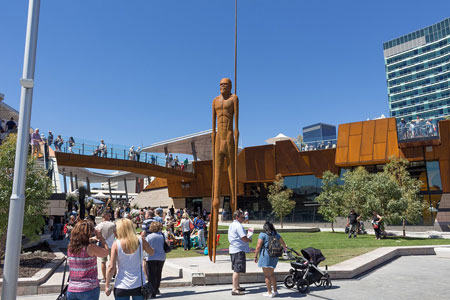Perth Translation Services » Norwegian translator » Norwegian Brochure Translation
Norwegian Brochure Translation
Perth Translation Services provides Norwegian brochure translations for businesses and government departments in Australia. As a professional translation services provider, we offer fast and quality Norwegian brochure translations, and are able to typeset Norwegian translations into existing design files.
We usually work with InDesign project folders shared by clients, and deliver multilingual brochures from a single brochure in English.
Working with local Norwegian translators, designers and typesetters, you can be assured your project gets delivered by professionals familiar with the local culture and terminology used in Australia, and any project feedback gets addressed quickly.
Norwegian Brochure Translators
Enquire with us today
Latest Testimonials


About the Norwegian Language
The Norwegian language is the official language of Norway. It is spoken by over four and a half million people, and it belongs to the group of North Germanic languages which are spoken in Scandinavia. These include Swedish, Danish, Icelandic and Faeroese.
The Norwegian language exists in two forms: bokmål (which means "book language") and nynorsk (which means "new Norwegian"). Bokmål developed from the Dano-Norwegian koiné language that evolved under the union of Denmark-Norway in the 16- and 17-century, while Nynorsk was developed based upon a collective of spoken Norwegian dialects. Norwegian is one of the two official languages in Norway. The other is Sami, spoken by some members of the Sami people, mostly in the Northern part of Norway. Norwegian and Sami are not mutually intelligible, as Sami belongs to the Finno-Ugric group of languages. Sami is spoken by less than one percent of people in Norway.
From the 1840s, some writers experimented with a Norwegianised Danish by incorporating words that were descriptive of Norwegian scenery and folk life, and adopting a more Norwegian syntax. Knud Knudsen proposed to change spelling and inflection in accordance with the Dano-Norwegian koiné, known as "cultivated everyday speech." A small adjustment in this direction was implemented in the first official reform of the Danish language in Norway in 1862 and more extensively after his death in two official reforms in 1907 and 1917.
Meanwhile, a nationalistic movement strove for the development of a new written Norwegian. Ivar Aasen, a botanist and self-taught linguist, began his work to create a new Norwegian language at the age of 22. He traveled around the country collecting words and examples of grammar from the dialects and comparing the dialects among the different regions. He examined the development of Icelandic, which had largely escaped the influences under which Norwegian had come. He called his work, which was published in several books from 1848 to 1873, Landsmål, meaning "national language". The name "Landsmål" is sometimes interpreted as "rural language" or "country language", but this was clearly not Aasen's intended meaning.
The name of the Danish language in Norway was a topic of hot dispute through the 19th century. Its proponents claimed that it was a language common to Norway and Denmark, and no more Danish than Norwegian. The proponents of Landsmål thought that the Danish character of the language should not be concealed. In 1899, Bjørnstjerne Bjørnson proposed the neutral name Riksmål, meaning national language like Landsmål, and this was officially adopted along with the 1907 spelling reform. The name "Riksmål" is sometimes interpreted as "state language", but this meaning is secondary at best. (Compare to Danish rigsmål from where the name was borrowed.)
After the personal union with Sweden was dissolved in 1905, both languages were developed further and reached what is now considered their classic forms after a reform in 1917. Riksmål was in 1929 officially renamed Bokmål (literally "book language"), and Landsmål to Nynorsk (literally "new Norwegian"). A proposition to substitute Danish-Norwegian (dansk-norsk) for Bokmål lost in parliament by a single vote. The name Nynorsk, the linguistic term for modern Norwegian, was chosen to contrast with Danish and emphasis on the historical connection to Old Norwegian. Today, this meaning is often lost, and it is commonly mistaken as a "new" Norwegian in contrast to the "real" Norwegian Bokmål.

